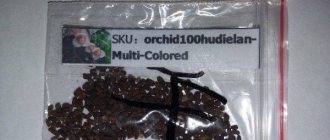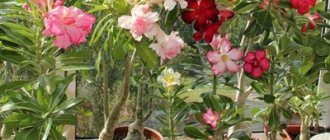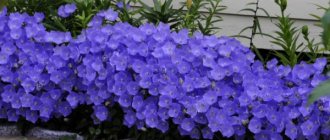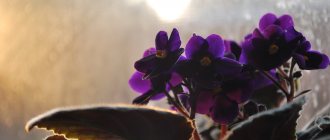Lobelia ampelous belongs to the Campanula family. The genus includes more than 300 species. Most grow in the subtropics and temperate regions. In Russia, in the wild you can find Lobelia Dortmann, sessile leaf. In the climatic conditions of the central zone of our country, the flower is grown as an annual plant. It has earned love among gardeners due to its attractive appearance and long flowering period. It is actively used in landscape design, used to decorate balconies and gardens, summer cottages, alleys, parks, and planted in hanging pots.
Lobelia ampelous: growing from seeds
Florists grow a wide variety of plants. Lobelia ampelous attracts with its beautiful flowers of various shades, pleasing to the eye until deep frost. Plants with small inflorescences are planted in boxes or hanging flowerpots. The flower goes well with other representatives of the flora. How to grow this beauty and care for it is of interest not only to novice gardeners, but also to those who have extensive experience.
What does a flower look like
The most popular variety of lobelia, which is grown by gardeners in different climatic regions of Russia as an annual, is “Erius”. The flower comes in a variety of forms. The plant can have drooping shoots, creeping, spreading. These species are often used to decorate borders and create flower waterfalls. Compact types of ampelous lobelia are often grown as indoor perennial plants.
The most popular varieties are listed below:
- "Regatta Serpentine" - ampelous lobelia with amazing fan-shaped flowers in light pink shades;
- "Regatta Blue" - flowers are dark blue or sky blue;
- "Regatta Special" - annual lilac-light bud;
- "Reggata Mix" has a wide variety of bud colors;
- "Anabel" (Anabel Violet Whiskers) - has light lilac and blue blooms;
- “Sapphire” - lobelia blooms with purple buds.
- Red Cascade - buds of dark pink or pale crimson;
- Dortman - this species is listed in the Red Book, there are very few such plants left, it can withstand frosts down to -35 degrees.
Flower varieties
Lobelia comes in several types.
Dwarf
The plant branches heavily, reaches a height of 20 cm. The flowers are small, about 2 cm. The colors are blue, white, purple, pink. This variety, in turn, is divided into two subspecies:
The only important thing for him is that the soil is always moist.
Compact
This variety is in great demand because it can be grown not only in the garden, but also at home, on the balcony. Another compact lobelia is often used to decorate flower beds. It grows no more than 15 cm in height.
It is characterized by abundant and long flowering, which is also a huge plus. The color of the flowers is predominantly blue.
Erect
This variety is distinguished by a straight stem and a height of up to 75 cm. Lobelia of this variety prefers high humidity. For this reason, in wild places, she likes to be located next to bodies of water and wetlands.
Ampelnaya
This type of plant is characterized by the presence of long shoots. It is recommended to use flowers for flower pots and home flower beds. By color there are white, blue with a white eye or heavenly with a white eye.
The variety is quite resistant to temperature changes.
Proper sowing of seeds
How to grow fuchsia from seeds at home
The sowing stage is the most difficult stage when growing lobelia. This is because the seeds are very small, similar to sand. Therefore, it will be difficult for novice flower growers, but below you will get help. For beginners, it is advisable to use seeds in granules. In this case, sowing becomes much more enjoyable. Caring for lobelia is not very labor-intensive. The best option is to prepare the seedlings in advance instead of sowing the seeds directly into the soil.
Attention! Lobelia begins to bloom only three months after sowing the seeds. But a plant that was planted immediately in the ground will bloom only in the fall.
Lobelia Seeds
What is this flower
Lobelia is one of the most popular types of flowers for the garden or cottage.
Lobelia is one of the popular plants among gardeners. It attracts attention with its delicate flowers, which grow in dense groups, and the ampelous forms hang beautifully from the flower pots, reminiscent of a waterfall. This plant is a perennial shrub of the Bellflower family, which in our country is grown, in most cases, as an annual. The flower's homeland is South Africa, where the flower grows on wet and rocky cliffs, although it can be found almost all over the world in tropical and temperate climates. In total, there are about 300 species of lobelia, of which only 20 are cultivated.
Growing seedlings
How to grow abutilon flower from seeds at home
Growing lobelia as seedlings will allow gardeners to admire the buds from the first months of summer, if everything is done correctly and carefully. In order to start planting seedlings, you need to prepare in advance the container necessary for planting them. And you need to start the sowing stage from the first days of February. First of all, you need to prepare the soil for this amazing flower. You will need garden soil, which must be mixed with ordinary river sand.
Note! And to kill various bacteria, you need to keep it in a regular oven for 10 minutes at 180 degrees.
You need to make a small hole in the container where the seedlings will be sown. It is necessary for the outflow of fluid. Next you need to pour a fairly thick layer of expanded clay or broken brick. Pre-roasted soil is poured into the container and pressed a little, leveling it in advance. When soil is poured into the container, it needs to be rinsed. After moistening the soil, seeds are placed in it, only they need to be distributed at large intervals from each other. It will be more convenient to do this with seeds that are in granules. All containers must be covered with glass or a bag. Then the containers with future seedlings are placed in a place where it is warm and has enough light.
Sowing seeds in a pot
Firstly, you need to understand that the soil for lobelia needs airy, light, moist and loose. The soil must be well saturated with air for the plant to be comfortable. Seedlings need to be planted in open ground, which contains sand and humus. The plant successfully takes root in slightly acidic or neutral soil. A small pot or any similar container is suitable for sowing seeds. Sometimes seeds are placed directly into open ground.
Flower in a hanging pot
Features of the plant
Currently, approximately three hundred species of lobelia are known, and all of them are wonderful decorations of the landscape. Caring for this plant is not easy and requires patience. But it's worth it.
Lobelia is an annual crop. The most common type is ampelous lobelia, which is grown both in open ground and in flower pots.
The first stage in the life of lobelia can be described as relatively capricious. Of course, many take ready-made seedlings, but it would be better to grow them yourself.
Lobelia: when to plant in open ground?
The planting period for lobelia is from mid-winter to mid-spring. In April-May, flowers are transplanted into a flowerbed or flowerpot. Lobelia seeds are very small, so they cannot be distributed evenly over the soil. But you can apply some tips for equal placement. They must be mixed with a small amount of soil using a stick, then the resulting composition must be scattered evenly over the surface of the soil.
How to propagate ampelous geranium at home
You can simply pour the entire bag of seeds directly into the ground, but through a small hole so as not to scatter them. It is practical to use a wet match or toothpick, first lowering it into a bag of seeds and then into the ground. Some people use snow - they spread it on the ground in a thin layer, and scatter lobelia seeds on top.
The easiest option is to buy lobelia seeds in granules, because it is more convenient to scatter them evenly on the soil surface. The seeds do not need to be sprinkled with an additional layer of soil. To avoid thinning the rows, you do not need to sow them next to each other. After planting, you need to cover the container with film or glass. Every day you need to wipe off condensation from the inner surface of the glass and ventilate the pot with the planted plant. Thus, the normal temperature for the flower is maintained. When seedlings are early, you need to provide the flower with a large amount of sunlight. It is necessary to water every day for two weeks using a sprayer.
Note! When the seedlings grow well, they need to be divided into bushes and transplanted into open ground. In the same way, you can plant lobelia in a flowerpot and hang it outdoors.
Reproduction
Lobelia reproduces mainly by very small, almost dusty seeds. It is usually grown by seedlings. Sowing of seeds is carried out at the end of March or at the beginning of April. The soil in the box is carefully leveled and lightly compacted. Since lobelia seedlings suffer greatly from blackleg, humus should not be added to the soil mixture for growing seedlings, but made from equal parts of turf soil, peat and sand.
Since the seeds are very small, to sow them evenly, I mix them with dry fine sand (1:5) and do not plant them in the soil, but only press them against it. Many gardeners, in order to prevent the seedlings from becoming too dense, first sprinkle about 1 cm of snow on the ground, and only then scatter the seeds over the snow.
The container with the crops is covered with film, ventilated daily and the condensation is removed. To prevent the soil from drying out, it is periodically sprayed with water from a sprayer so as not to wash away the seeds.
Lobelia usually emerges vigorously and densely within 10–12 days. Seedlings usually spring up in a bunch of 5–7 pieces
To do this, make grooves 1 cm deep in the prepared soil, carefully pick up the lobelia seedlings with a toothpick (usually 3–5 pieces are grabbed) and place them with their roots in the grooves. Having filled the entire row, sprinkle the roots with soil.
Having finished picking, the seedlings are watered and placed in a place where there is no bright sun. When the pick takes root, move it to the sun.
And after 2–3 weeks, the seedlings are planted in pots with a diameter of about 5 cm. A bunch (3–5 pieces) of seedlings are usually planted in one hole to obtain strong compact bushes. This is easier to do with a thin picking stick. Every 12–15 days, seedlings need to be fed with complex fertilizers.
Plants are planted in open ground at the end of May at a distance of 10–20 cm from each other. Lobelia flowering begins in seedlings and continues until frost. And in order for the flowering to be abundant and long, the plants must be fed 1-2 times during flowering and watered when there is a lack of moisture in the soil.
Lobelia responds well to cutting and pinching. If you shorten its shoots, it quickly resumes its growth, becomes more magnificent, blooms more amicably and is transformed.
And varieties with double flowers and especially interesting varieties of lobelia are propagated by cuttings. To do this, selected mother plants are planted in pots in August and left in the room after rooting. In March they begin cuttings and by the end of May large plants are obtained.
Soil preparation
Ampelous lobelia takes root well in soil with different compositions. But the main condition is the choice of light soil with good looseness, so that oxygen is well supplied to the root system. Heavy clay soil is not suitable; the plant may begin to rot and die. For planting seedlings, ordinary peat tablets or peat are suitable. You can buy a ready-made mixture in the store.
To plant in open ground, you should mix garden soil with humus, peat, and river sand. The acidity of the soil should be neutral or very weak.
Planting seedlings in open ground or flower pots
When there are severe frosts outside, and the sun has already warmed the soil, then it’s time to transplant the lobelia seedlings into open ground.
Landing in the ground
The plant loves light very much, but also easily tolerates shade. This means that it can be planted in any area of the garden. The main requirement is that the soil is not oversaturated with humus, otherwise the plant will bloom poorly and there will only be a lot of green foliage. Landing takes place in several steps.
First you need to make holes about 25 cm deep and at a distance of 20 cm from each other. Place a teaspoon of vermicompost and half a glass of ash in each hole. Pour some soil, mix and fill with water. Place lobelia, or a group of plants from a glass with seedlings, on the resulting mixture and cover with soil. Planting a plant in a pot is not very difficult, as many people think. The flower is planted in a pair of bushes, and the main thing is not to damage the root system of each plant.
Step by step steps of the planting process:
- the flower is watered;
- extracted in a group of a pair of seedlings;
- placed in a pot for planting;
- flowers with straight stems should be planted closer to the center;
- fill the remaining space with soil.
Important! The soil must be added, taking into account that there is at least three cm left from the soil to the top edge of the flower pot. This will make it more comfortable to water the flower. But the main thing is not to overdo it with watering, as you can cause the development of some diseases. For proper flowering, you need to water once a week.
How many pieces to sow in a flowerpot?
How many seeds to sow in a flowerpot depends on its diameter. About 15 pieces can be planted in a pot with a diameter of 30 cm. Some gardeners like to plant more: up to 25 seeds in one pot. If there are not enough seedlings, then you can plant five of them, press the stems to the soil, and after a month and a half the bushes will form a lush head. Seedlings of lobelia flowers require less space than petunias.
Care
- Temperature. Ampelia lobelia is a heat-loving flower, but young shoots do not tolerate heat well. The optimal growth temperature is 20 – 22°C.
- Watering. Watering should be moderate, you should not allow it to dry out, but you should not overfill the substrate either - root rot will appear. Important: the soil should be slightly moist.
- Light. This variety loves light; in the shade the shoots stretch out, become thin, and the flowering turns out pale and sparse. Places with variable shade should be chosen and direct sunlight should also be avoided. Varieties are afraid of drafts.
Trimming. Immediately after the first flowering, it is recommended to cut the stems in half - side shoots and new buds appear.- Feeding. It is necessary to fertilize the flower regularly; excessive fertilizing with organic fertilizers and nitrogen should not be allowed, as this stops flowering.
It is recommended to feed with potassium sulfate. - Pot. Hanging flowerpots, flowerpots, and balcony boxes should be spacious, of medium height, with drainage holes for water drainage.
Varieties of ampelous lobelia will decorate any flower beds, flower beds in the garden and open balconies and loggias of apartments with their contrasting lavender blooms.
Is it necessary to pinch ampelous lobelia?
It is not necessary to pinch the flower. But thanks to this, lobelia bushes can be more fluffy and bushy. This is especially recommended if there is still enough time left before planting in a permanent place and the seedlings are outgrowing. Pinching is done when the flower sprouts reach five centimeters.
Pinching process
In conclusion, it should be noted that ampelous lobelia is quite easy to care for; the main difficulties can only be experienced when sowing. Experienced gardeners also recommend choosing seeds in granules for more convenient sowing. If the plant is planted correctly and given proper care, it will bloom lushly throughout the summer, right up to severe frosts.
Lobelia in a flowerbed goes well with other plants and feels great in boxes or flowerpots. Previously, lobelia was used in medicine - the variety “Lobelia syphilitica” was used to treat the disease syphilis, now it is used as a decorative decoration for flower beds. So the functions of this plant are quite diverse.
The most popular varieties with photos
There are many varieties of lobelia that differ in color: white, blue, purple, lilac, red. Let's look at the most popular of them.
Sapphire - the plant is endowed with lush and hanging stems, reaching a length of 35 cm. The variety blooms with small, blue flowers with white spots on the petals.
Lobelya Sapphire is endowed with lush and drooping stems reaching a length of 35 cm
Emperor Willie is a dwarf variety with a bush height of no more than 10 cm. The flowers are blue. This variety is excellent for border plantings.
Emperor Willy is a dwarf variety with a bush height of no more than 10 cm
Crystal Palace - the variety is distinguished by abundant flowering with many small flowers blooming simultaneously on the bush. The color of the flowers is deep purple.
The peculiarity of lobelia Crystal Palace is abundant flowering with many simultaneously blooming small flowers on the bush
Cambridge Blue - the variety has low-growing and lush bushes with branches up to 10 cm long. The flowers are small in size, pale purple in color with a blue tint.
The Cambridge Blue variety has low-growing and lush bushes with branches up to 10 cm long and pale purple flowers with a blue tint.
Lobelia Riviera is an annual plant that blooms throughout the season and reaches a height of 10 cm. The flowers are bright pink or dark blue. During the period of abundant flowering, the leaves are almost completely hidden by the flowers. The variety is best suited for planting on borders or in boxes on balconies.
Lobelia Riviera blooms throughout the season and reaches a height of 10 cm
Miss Klibran is a wide bush with a flowering area up to 30 cm in diameter. The plant grows up to 15 cm, the flowers are bright purple with a white center.
Lobelia Miss Clibran has a flowering area up to 30 cm in diameter and reaches a height of 15 cm
Blue fountain - the bush is formed from 6-8 stems no more than 30 cm long. The branches resemble a blooming blue fountain. The flowers are characterized by a blue color with a white spot.
Lobelia variety Blue Fountain is formed from 6–8 stems up to 30 cm long, and the branches resemble a blue fountain of flowers











